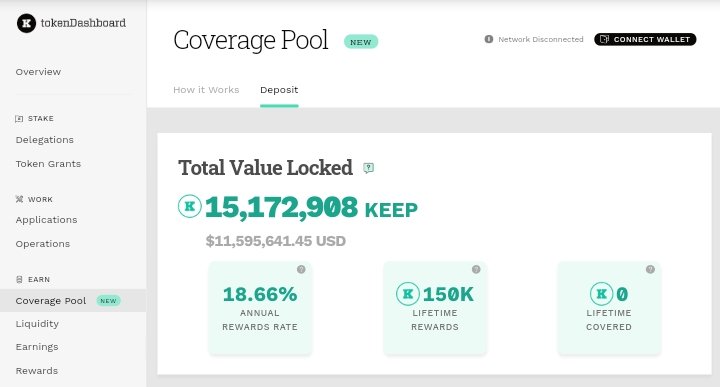An Intro to KEEP network - Ethereum Based Privacy Hub

Keeps bring privacy to DApps on the Ethereum blockchain. It is a network of privacy, aiding the storage of private data on public blockchain without compromises. Keeps makes it possible to leverage privacy on a high performance blockchain, it is the network behind Tbtc which is said to be a bitcoin backed Ethereum network token. Tbtc enables its holders to have access to a network of smart contracts, with an exchange ratio of 1:1, BTC holders can mint Tbtc with their Bitcoin’s equivalent in order to leverage the world of decentralized applications.
Matt Luongo and Corbin Pon founded the keep Network in 2017. Reports say they previously co-founded Fold, a bitcoin shopping app, in 2014. The network functions as a privacy hub for decentralized operations, it derives value for being a privacy set up.
Keeps are core to the Keep network’s value proposition. The Keep network uses private enclaves known as "keeps" to securely encrypt and store private data. Off-chain keeps are protected using secure multiparty computation (sMPC), generating, securing, storing, encrypting and transmitting data across many individuals.
My attention was drawn to this project after seeing a partnership buzz with Nucypher; A Cryptographic Infrastructure for Privacy-Preserving Applications. KEEP the native token, powers all activities on the keeps network.
Just not privacy, the Keeps network core functionality includes flexibility, the network is designed to support unlimited applications and to give members total freedom in choosing where to invest their resources and time. Just like the many other crypto projects, keep is operated in a Decentralized manner, in the sense that, every work carried out on the network is decided across members therein. In other words, for an app to be approved and worked upon, KEEP holders decide whether the specific incentives of each justify the risks and the time commitment, this all can be verified here

How Are Members Rewarded?
Firstly, KEEP is required for someone to become a member of the Keep Network members are eligible to earn rewards by performing work on the platform. This work, as stated here is the computation and availability required to select and pull the network’s off-chain “keeps” together and to read the associated data. Members are randomly selected to coordinate a distributed key generation protocol that results in a public ECDSA(In cryptography, the Elliptic Curve Digital Signature Algorithm (ECDSA) offers a variant of the Digital Signature Algorithm (DSA) which uses elliptic curve cryptography.) key for the group, which is used to produce a wallet address that is then published to the host chain.
For the most of it, I believe KEEP has been on to a lot that's not actually been spoken off. One of which I stumbled on earlier was the voted in grant of chronologic. With an automated system comes certain risks which involve liquidation and on a blockchain as costly as Ethereum, it's not an environment to be careless. That said, the KEEP members voted in the grant, giving Chronologic the podium to build on KEEP, a tool that will avoid liquidations of funds by stakers on Tbtc. When I took some time to explore the network, I discovered there was way more value within, currently, via a tool called allthekeeps maintained by pythonmetaclass, you'd realize a total ETH collateral worth more than $120 million, a stakedrop of over $155 million.
Overall, the network has been audited by various companies and I'd say the network may just be up to something great. The future would rely on many decentralized and autonomous options, the ability to anonymous, protected, auto compounding and still given full financial control will be the biggest sellers in coming times. From all above and more with research, I would say this is something to KEEP an eye on, wink :)
Posted Using LeoFinance Beta